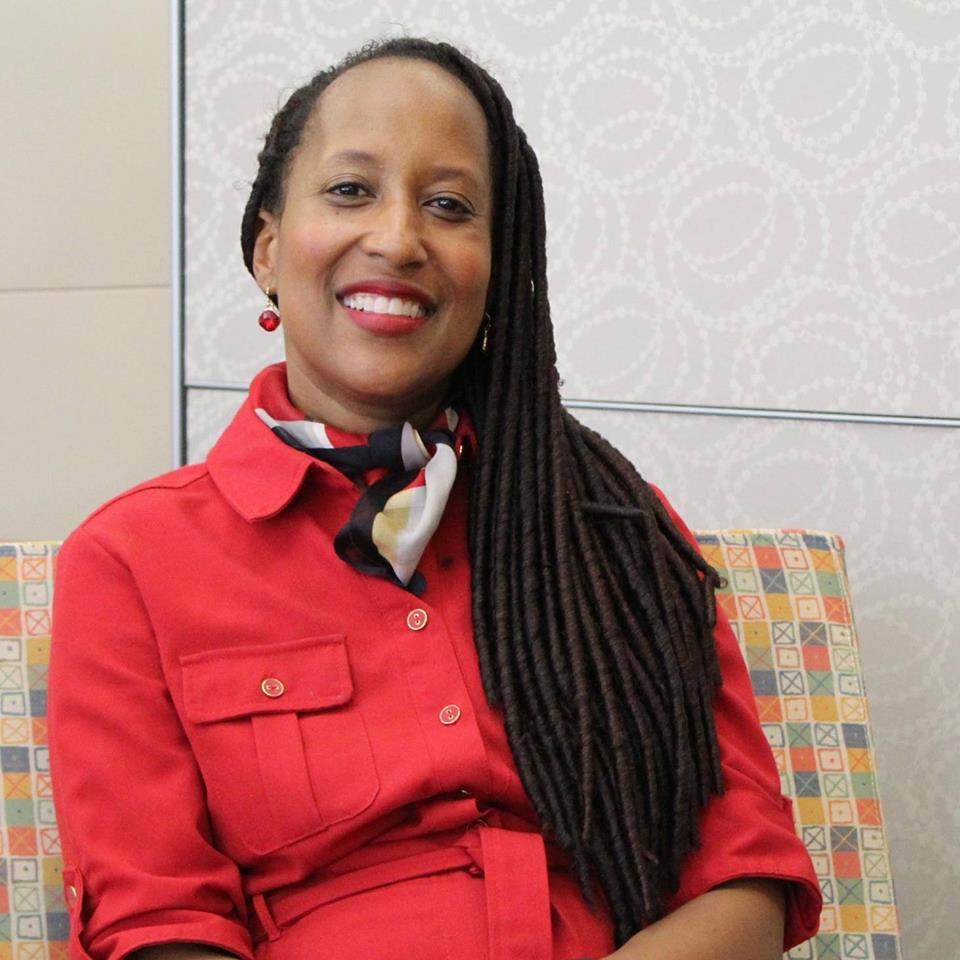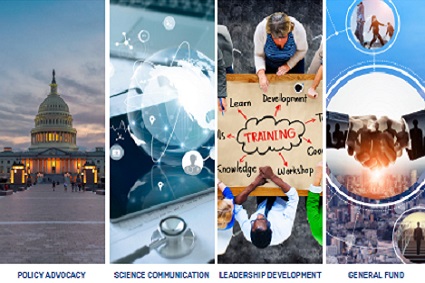The Urgency of Adaptation
David E. Conroy, PhD, SBM President
 David E. Conroy, PhD
David E. Conroy, PhD
SBM President
I have great news to share! Summer has arrived and brought with it a glimmer of hope. There is a growing sense that we may be entering the new normal as vaccination rates climb and our institutions roll out their return-to-work policies. But we are not in the clear—at least not yet. We need to heal from this collective trauma. And as we begin our healing, I encourage us all to reflect on both how we changed, by design and by default, over the past year, and the changes we still need to thrive in our new normal.
The theme for our 2022 annual meeting is “The Urgency of Adaptation.” This theme was not my original idea for the upcoming year. But as the months passed, it was the only theme that mattered or even made sense for this year. We are living at the confluence of three public health tragedies caused by the climate crisis, systemic racism, and the COVID-19 pandemic. Each threatens our health and well-being; each also invites us to adapt and revitalize our work both individually and collectively. Thus, our challenge is clear.
After 2 years of virtual meetings, I know many are excited to return to an in-person meeting. I am pleased to announce that the Society’s 43rd Annual Meeting & Scientific Sessions will be held from April 6-9, 2022, at the Hilton Baltimore Inner Harbor Hotel in Baltimore, MD. Please mark those dates on your calendar and prepare for an intellectually stimulating professional meeting and a joyous reunion with friends and colleagues!
Baltimore is easy to access by planes, trains, and automobiles—even by boat! We hope that the proximity to Washington, DC, will enable many of our colleagues in the federal government to join us for the meeting. The hotel itself is a gem. It was renovated during the pandemic and looks brand new. It overlooks the beautiful Camden Yards ballpark and is a short walk to all the attractions and restaurants in the Inner Harbor.
Many conferences this fall/winter will be virtual events so SBM2022 may be one of your first opportunities to free yourself from the clutches of your webcam and gather in person with colleagues from around the world. Of course, the pandemic is ongoing and public health guidance is evolving rapidly. Rest assured that we are monitoring events closely and will adjust our meeting plans as needed to ensure the safety of attendees.
Dr. Ellen Beckjord is chairing our Program Committee and working hard to curate an inspiring, innovative, inclusive, and intellectually enriching meeting experience for attendees, presenters, and guests. The meeting will kick off at 4 p.m. on April 6 with a welcome session that promises to be memorable—please put it on your calendars now! Work-life boundaries have blurred during the pandemic, so we are going to start sessions a bit later in the morning and try to end them a bit earlier in the evening. We are adding midday flexibility to facilitate lunches between colleagues and friends who have not seen each other in a few years. We are keeping the networking sessions that received rave reviews at last year’s meeting, and extending the (live and recorded) research spotlights—a brief format designed to convey the essence of a research question, method, finding, and conclusion with maximal impact.
The abstract portal will open for submissions in a few weeks. On behalf of Ellen and the Program Committee, I invite you to submit your best work to enrich our Annual Meeting & Scientific Sessions. We look forward to seeing you at our society’s long-awaited reunion in Baltimore!
Until then, be well,
David
Editor's Note: Thrive in the New Normal
Crystal Lumpkins, PhD; Editor, Outlook

Crystal Lumpkins, PhD
Hello to summer! It’s hard to imagine we are past the first six months of 2021. As we look to the last half of the year, we can finally see a clearer path of what the future looks like. Hindsight is “20/20” and we are seeing some brighter days ahead. The society is thankful for SBM leadership that paved the path for success during a time of uncertainty and is excited to see our new President Dr. David E. Conroy take the helm. This issue of Outlook includes his first message to the society as president and great news about the society’s upcoming 43rd Annual Meeting & Scientific Sessions next April.
As we prepare to meet and greet each other in person next year, the president’s message echoes a call for adaptation and to thrive in the new normal. This issue reflects that call and highlights opportunities for integrated primary care (IPC) and implementation science; and how exercise may improve cognitive and brain health among cancer survivors. We also see how the pandemic unearthed communication inequities and the need for more equitable health communication models for future public health crises. An interview with Dr. Craig Umscheid, new director for AHRQ’s Evidence-Based Practice Center Division, shows how his experiences will help to shape that division’s direction and opportunities he sees for the intersection and integration of behavioral medicine in evidence-based medicine. Interviews with Dr. India Ornelas and Dr. Reginald Tucker-Seeley highlight their experiences during the pandemic, encouragement to seek out policy opportunities and to continue the focus on addressing systemic racism in clinical practice and public health.
Finally, there’s a chance to show your support by giving to SBM’s Giving Campaign because as the title states—“We’re Just Getting Started.”
SBM’s Giving Campaign: We’re Just Getting Started
Marian Fitzgibbon, PhD; SBM Past-President and Development Committee Chair

For the past two years, we have been listening to what the Society of Behavioral Medicine (SBM) members want from their professional home. You, the members, told us that you are tired of behavioral medicine being the “best kept secret” for evidence-based decision making. You want to see our science and our society as the “go-to-place” for solutions to today’s health challenges.
This led to the formation of important strategic goals to expand our leadership development offerings for members at all career stages, communicate our science to the public and industry, and increase our outreach efforts to policymakers. We were excited about these ambitious goals, but knew that achieving them would require additional financial resources and a culture shift around member giving, starting with leadership. After almost a year of quietly raising almost $90,000 and achieving a 100 percent giving rate among the Board of Directors, we knew it was time to share our success and excitement with the full membership.
On April 7, 2021, SBM officially launched the Proven Science—Better Health Giving Campaign to build members’ skills and more widely disseminate our science to achieve better health for all. Since the official campaign launch, our members helped raise $14,617 contributing to the grand total of $101,289 that has been raised since April 2020. During the Giving Campaign launch, we saw our SIGs go head-to-head in a Battle of the SIGs donation competition and breathtaking photos submitted by our members who participated in the Virtual Hike. Thank you to the Physical Activity SIG who had the largest percentage of members donate during the Annual Meeting week, raising $660! Members also participated in the Planking Palooza event by posting photos of themselves planking in different environments after donating to the Science Communication Fund. Thank you to Dr. Sherry Pagoto who matched all donations up to $1,000 and to our members who raised $2,250 for the Science Communication Fund during the Annual Meeting week. And thank you to everyone who has donated so far.
The success of the Giving Campaign launch during the Annual Meeting was just the start of something so much bigger. The Battle of the SIGs competition is now a year-long event where the next winner will be announced during the 2022 Annual Meeting closing ceremony. There will be plenty of great opportunities to give throughout the year. A gift to the General Fund will keep membership dues low and allow us to respond to new opportunities. By giving to the Leadership Development Fund, you’re donating to expand the personal and professional growth of our up-and-coming members. Investing in our members means investing in the future of behavioral medicine. Giving to the Policy Advocacy Fund means that we can make public health legislative breakthroughs for wider impact. All donations to the Science Communication Fund enable SBM to help members disseminate their research findings beyond the traditional academic community. SBM can do so much more to help members combat misinformation and improve health literacy. However, we’re really going to need your help.
There are many ways that you can help support SBM’s Proven Science—Better Health Giving Campaign. You can conveniently make a donation on the SBM website, mail in a donation or pledge form, donate stock, or invest in on our many named giving opportunities. If you work in industry or are a member who wants to get more involved in fundraising, please email SBM Development Manager Eli Rehorst at erehorst@sbm.org. We would love to have you support us and achieve our ambitious goals.
We hope you will continue to join us on this journey, as we build members’ skills and more widely disseminate our science to achieve better health for all. We look forward to continuing to join together to move behavioral medicine from the “best kept secret” to the best-known solution for today’s health challenges.
Did Communication Inequities Worsen During the COVID-19 Pandemic? What Is There to Learn?
Adati Tarfa, PharmD, MS✉; Patricia Rodriguez Espinosa, PhD, MPH✉; and Kassandra I. Alcaraz, PhD, MPH✉; Health Equity SIG

The COVID-19 pandemic has been marked by considerable misinformation spread and rapid changes in messaging. Examples include evolving guidelines around COVID-19 treatment1, testing for asymptomatic individuals2, and shelter-in-place mandates, among others. These were accompanied by changes in messaging regarding travel restrictions, mode of transmission, and safety precautions. Notably, recently, while the uneven distribution of vaccines was occurring across the country, with marginalized communities having less access to the vaccine during the initial rollout, the Centers for Disease Control and Prevention (CDC) revised guidelines to allow for vaccinated people to be mask-less in public spaces3. The rapid change in COVID-19-related information and guidelines continues to present a challenge in ensuring that information reaches and benefits all, particularly populations who have been overburdened by the pandemic.
Historical inequities in access to and availability of factual health information have resulted in some populations facing more barriers to accessing quality information. Although studies have not examined the direct impact of COVID-19 misinformation and information access on health outcomes, it is evident that the pandemic has disproportionately impacted marginalized communities who historically have unequal access to health information. Distrust coupled with barriers to accessing information have potentially contributed to disparities in vaccination rates, particularly among Black Americans and Latinx communties4,5. With the advent of going back to the “new normal,” there is a need to examine how to improve COVID-19 messaging and other health communication to be more inclusive.
Hurdles to equitably accessing health information include language barriers and issues with health information translation, technology access, and health literacy. The resulting challenges include the following:
- Time: During a pandemic, time is of the essence, yet underserved communities tend to lag in obtaining health information. For example, signs for vaccination in Spanish, appointment hotlines, or websites in diverse languages are just rolling out in underserved areas while English-speaking communities have had vaccine information in readable texts for months in advance.
- Resources: The resources needed to translate and spread information can also present additional barriers such as funding to produce and distribute the information in the appropriate language. This responsibility tends to fall on already overburdened community organizations.
- Expertise: Beyond simple word-for-word translation, the context of the health information and tone of the messaging must be culturally informed with accompanying values and preferences.
- Collaboration: Authentic community engagement is needed to optimize health messaging. However, time and access to resources in historically disadvantaged populations presents challenges to local collaboration.
As recovery and rebuilding efforts begin, we must consider diverse and more equitable models of rapid health communication that can be applied to future public health emergencies. Top-down approaches to developing population-wide messages have struggled in reaching and benefiting all populations. Alternative approaches, including bottom-up models, involving trusted messengers in the community, and community-driven and culturally congruent messaging have the potential to more effectively reach minoritized populations and those with less access. For instance, community engagement strategies funded by the National Institutes of Health Community Engagement Alliance (CEAL) Against COVID-196 have been utilized in multiple states. In this Alliance, academic and community partners work together to co-develop messaging and outreach strategies to address inequitable access to health information in the hardest-hit communities.
As vaccinations continue to roll out, there is a strong need to examine our communication response to the pandemic, and to learn from it. Research is needed on the behavioral health implications of communication inequities during COVID-19. Federal and state infrastructure needs to proactively identify more equitable communication strategies when emergencies arise. Improving health communication and closing gaps in unequal access to health information will be key as we plan for equitable recovery from this pandemic as well as the unknown public health emergencies of the future.
References
- American Journal of Managed Care (AMJC) staff. A Timeline of COVID-19 Developments in 2020. https://www.ajmc.com/view/a-timeline-of-covid19-developments-in-2020. January 1st, 2021. Accessed May 31st, 2021.
- Katherine J. Wu. C.D.C. Now Says People Without Covid-19 Symptoms Do Not Need Testing. New York Times. Aug. 2, 2020.
- Interim Public Health Recommendations for Fully Vaccinated People. https://www.cdc.gov/coronavirus/2019-ncov/vaccines/fully-vaccinated-guidance.html. Accessed May 31st, 2021.
- Bogart, Laura M., Lu Dong, Priya Gandhi, Samantha Ryan, Terry L. Smith, David J. Klein, Luckie-Alexander Fuller, and Bisola O. Ojikutu, What Contributes to COVID-19 Vaccine Hesitancy in Black Communities, and How Can It Be Addressed?. Santa Monica, CA: RAND Corporation, 2021. https://www.rand.org/pubs/research_reports/RRA1110-1.html
- Kaiser Family Foundation. Latest Data on COVID-19 Vaccinations Race/Ethnicity. 2021. https://www.kff.org/coronavirus-covid-19/issue-brief/latest-data-on-covid-19-vaccinations-race-ethnicity/. Accessed June 1st, 2021
- National Institutes of Health. Community Engagement Alliance (CEAL) Against COVID-19 Disparities. https://covid19community.nih.gov. 2021. Accessed May 31st, 2021
Promoting Early Career Researchers in SBM: Launch of SBM’s Early Career Researcher Mentoring Program
Carina Nigg✉; Steering Committee Chair, Early Career Researcher Mentoring Program; ETCD Council and Student SIG Liaison

Welcome to the “Education, Training, and Career Development (ETCD) Council corner!” In each issue of Outlook, the ETCD provides SBM members with opportunities and support to enhance their training and career development in behavioral medicine. In this issue, we report about SBM’s first Early Career Researcher Mentoring Program and its launch during the 2021 Annual Meeting.
The last year has been a challenging time for early career researchers, with in-person events being cancelled or moved to an online environment. Online mentoring programs are one option to promote and facilitate career development of upcoming researchers in a crucial career development phase during pandemic times.
In SBM, the Student SIG and the ETCD Council in collaboration with the Health Equity SIG set up an Early Career Researcher Mentoring Program. The program is open to graduate students and post-docs. The program has several goals: Promoting exchange and networking between early career researchers and experts in the field of behavioral medicine, providing expert and peer support to work on a goal, facilitating discussion around topics in behavioral medicine, and building one’s mentoring team. The program consists of two components: One expert mentoring component, where a group of three to four early career researchers meets with an established SBM expert and mentor; and a peer-mentoring component, where the same group of early career researchers meets without the mentor. Meetings are scheduled once a month, with alternating expert- and peer-mentoring meetings.
We are proud that we launched the Early Career Researcher program during SBM’s Annual Meeting together with 15 mentors and 50 early career researchers! The kick-off session provided some background and organizational information, together with some fun activities to get to know each other in the first part. In the second part, the early career researchers and their respective mentor gathered in breakout rooms to set up their mentoring group and for some first discussions.
We would like to thank all mentors and mentees for participating in the kick-off session and launching the program together with us. We would especially like to thank the mentors, all established SBM members, for dedicating their time and sharing their expertise with the next generation of scientists in behavioral medicine. We wish the mentees and mentors all the best for the coming year with great discussions, networking, and productive expert- and peer-mentoring meetings!
Adapting Professionally during COVID-19: A Conversation with Dr. India Ornelas and Dr. Reginald Tucker-Seeley
Rachel Shelton, ScD✉; SBM Member Delegate


India Ornelas, PhD, MPH and Reginald Tucker-Seeley, ScD
Thanks for joining! Let’s talk about some adaptations that would be useful to keep in light of everything that has happened in the past year. What do you think is important for organizations like SBM to continue prioritizing.
Dr. Ornelas: We need to figure out how to talk about racism and its impact on health. SBM has the opportunity to reflect on what our role is as a professional organization in keeping this issue front and center, and how can we continue to diversify the workforce. I think professional organizations have a huge role play to play in that. We also need to think about how to make it so it is part of the whole organization and not only within a SIG.
Dr. Tucker-Seeley: I think that's a good point, Dr. Ornelas. Professional organizations attempting to confront systemic racism have to make sure that such efforts are not siloed within their organizations; that is, they have to make sure that such efforts to be “anti-racist” are woven throughout the entire organization. Given the sustained conversation we've been having in our field about systemic racism and how organizations can be more anti-racist, we have an opportunity to ensure real change as we come out of the pandemic. We can’t just come out of our homes and go back to ‘normal’ and return to what life was like. Pre-pandemic we were definitely not discussing issues related to systemic racism and the impact that structural racism has had on our workforces and health outcomes.
Editor’s Note: Earlier this year, SBM unveiled a new strategic plan that foregrounds diversity, equity, and inclusion and expressly diffuses them throughout the organization as a whole. Rather than having DEI as one standalone outcome, SBM’s Board incorporated DEI into each strategic outcome identified in the plan, to ensure it is a priority at every level of the organization.
Dr. Ornelas: Also, I think the past year really highlighted the importance of our science being used. Something that I think SBM has always tried to focus on is how do we get our science into the right hands, such as policymakers, and the clinical and public health practice community.
Dr. Tucker-Seeley: Oh, that is critical! I think figuring out how we can better ensure that the people who need the science get it. During the pandemic, I was so frustrated by people with a lack of expertise communicating about issues related to health disparities in the popular media. We have to do a much better job of not only communicating our science in peer reviewed journals but figuring out the best ways to get our science to the popular press and to policymakers. Unfortunately, many of us don’t have the training to do that well.
Dr. Ornelas: Well, that was a big shift, for me, this year, I started writing Op-eds for the first time. And I actually developed my Twitter and social media profile for the first time. Now, it’s where I am actually finding the most relevant science. I think it humanizes our field to be visible in non-academic spaces, too. We are researchers, but we are also people who care deeply about the issues we work on. Opinion pieces give us an outlet to share that perspective. It’s helpful to find your niche and figure out how to make social media work for you. I’ve been getting to know reporters and the media team within my own institution. The editorials and commentaries I wrote were actually more rewarding than the journal articles I wrote this year.
Dr. Tucker-Seeley: Yes! After we publish papers, we should also ask, “How do we get our work out to the community and how do you translate our work for the community?”. I think the public is a bit more open to talking about health issues after the pandemic, because we've been talking about health for the past year, so I think we should capitalize on this attention to health issues, and figure out how we (public health/behavioral medicine) remain in the public eye.
Thanks for sharing—these are great suggestions. Other ways the past year has changed your work professionally or your research?
Dr. Ornelas: I had to decide whether I was going to be a COVID-19 researcher or not. As someone that does community engaged research, I had to listen to the communities’ priorities. I was in the middle of an intervention trial and I had to pause it, due to COVID-19. Fortunately, I got some internal funding from the University of Washington to do a small COVID-19 grant with my intervention trial participants. The trial was about the mental health of Latina immigrant women, and I realized I wouldn’t be able to understand the findings from the trial without understanding the impact of COVID-19 on the participants’ lives.
We also had to adapt our intervention modality to Zoom. It has been delivered in-person, so now we're going to have results on how the intervention performed in two different modalities – an unintended hybrid trial. It's been so interesting because our participation rates have actually been higher on zoom than they were in person, more women are showing up.
Dr. Tucker-Seeley: I found myself during this period, asking more COVID-19 policy related questions. I did get some funding from USC and am currently conducting a COVID-19 policy scan project. We are exploring specific legislation and executive orders at the federal level and across three states related to COVID-19. And, what we're looking for is explicit language that lists or mentions our vulnerable populations of interest. Specifically, we are looking for ways in which legislation was used to address the disproportionate impact of COVID-19 on vulnerable groups. We know that to address disparities, a one-size fits all policy approach is not going to work. I’m very excited about this work and eager to see where it goes.
That sounds amazing, thanks for sharing that. Any final thoughts on changes you are making with respect to students or your research team?
Dr. Ornelas: We always do check-ins at the beginning of our research team meetings to see how we were all doing personally. During COVID-19, I felt like that was so critical and I want to keep doing that. Everyone has been under so much stress this year, it was important for me as the leader of a research team that is mostly women of color, to be understanding and gracious. We need to continue that, and realize that people will continue to have challenges navigating work and life balance as we transition out of the pandemic.
Dr. Tucker-Seeley: I tried to give students in my lab the space to discuss how they were doing during this time as well, but we also tried to make sure that we prepared them for post-pandemic life. I trained in business (accounting) as an undergrad and that training included a lot of professional development opportunities. So, I’ve started to incorporate professional development once a month in my lab meetings. We added discussion about how you network, how you build your mentor team, and how you prepare a resume during this year in our lab meetings.
How to Prepare for your Telemedicine Appointment
Caroline Presley, MD, MPH✉; Allyson Hughes, PhD✉; and Jennifer Warnick, PhD✉; Diabetes SIG

The COVID-19 pandemic increased the need for telehealth and flexibility in the way that healthcare providers and patients meet. We have learned many techniques during this time and share these best practices from both the provider and patient perspective in this article.
Provider perspective:
- Ensure your patient is speaking to you in a private space free of as many distractions as possible (ie., not while driving, in the middle of a grocery store, etc.). If this is a telemedicine appointment and the patient’s video is off, ask if they would like to turn their video on.
- Reach out to patients with limited technology and/or internet connectivity, offer flexibility in platforms that can be used for video consultation, or non-video options, when possible.
- Provide self-report measures typically given at clinic check-in. This process has had to transition (I.e., PHQ). Consider ways in which your clinic can continue evaluating these areas while also ensuring secure data collection methods.
- Consider ways to make telehealth more accessible. Look for accessible features on your telehealth platform: the ability to include an interpreter on the call with the patient and provider, live captioning, high-contrast display, and automatic transcription.
- From Gerber et al, consider using trauma-informed care strategies: ensuring safety; being transparent and promoting trustworthiness (i.e. allow body language to be visible on screen); working collaboratively towards goals; empowering patients’ choices (i.e. preferences about the extent of the visit); and acknowledging cultural, historical, or gender issues (i.e. consider social determinants of health).
- Groups: Engagement may look different than in person. Many are “zoomed out” from virtual school and/or work. Validate this concern and provide examples of strategies to reduce zoom stress (I.e., turn off self-view, take physical activity breaks). How can you encourage participation in creative ways?
Patient or participant perspective:
- Before your appointment, write out any questions that you have for your provider. Do you have any side effects from medications? Need any refills? Do you have questions about your condition(s)?
- Open the telemedicine application before for the appointment to make sure you are comfortable with the platform.
- Make sure you know how early to show up for the appointment. Many ask that you login 15 minutes before the appointment is scheduled to start.
- Test your internet connection to make sure that you will have uninterrupted connection during your scheduled appointment time. It can be helpful to close other windows/applications on your device.
- Find a quiet place to have your appointment where you will not have interruptions during your appointment. If you have headphones with a microphone, this can protect others in your vicinity from hearing your conversation with your provider.
- Place your camera at eye level and center your face on the screen. Make sure any windows or bright lights are behind your device, not behind you.
Additional resources:
Evidence to Practice: An Interview with Dr. Craig Umscheid
Carrie Patnode, PhD✉ and Nora Henrikson, PhD, MPH✉; Evidence-Based Behavioral Medicine SIG

Craig Umscheid, MD, MS
Craig Umscheid, MD, MS is a practicing general internist and clinical epidemiologist who was named the new Director of the Agency for Healthcare Research and Quality’s (AHRQ) Evidence-based Practice Center Division (EPC Division) within the Center for Evidence and Practice Improvement, an appointment he will begin in July. Dr. Umscheid is currently faculty at the University of Chicago.
We sat down with Dr. Umscheid to talk about his transition to AHRQ and his thoughts on evidence-based behavioral medicine.
Tell us a little bit about yourself.
Clinically I practice general internal medicine in the inpatient setting. Academically, I’ve been trained in clinical epidemiology, and have spent my career building processes to translate research evidence into practice to support quality across hospital systems. That’s what I did at the University of Pennsylvania for about 15 years, where I helped establish and lead Penn Medicine’s Center for Evidence-based Practice, and most recently at the University of Chicago, where I’ve led quality, innovation and medical informatics. Now, moving to AHRQ, I’ll be focused in these areas at a national level.
Tell us a bit about the EPC Division.
In 1997, the Agency for Healthcare Research and Quality (AHRQ) launched the Evidence-based Practice Center (EPC) Program to promote evidence-based practice in everyday care. The EPCs develop reviews of the evidence on topics relevant to clinical care and healthcare delivery. Currently, there are 9 EPCs under contract to do this work.
What attracted you to make the move to direct the EPC Division?
The potential impact. The EPC Division has had a lot of impact informing guidelines, payer decisions, quality measures, and research agendas. I think the potential to strengthen that impact even further is there—including in the partnerships we build, and methods we innovate to further enhance our responsiveness to stakeholders.
What do you see at the intersection of behavioral science and evidence-based medicine? Our SIG’s members have great interest in dissemination and implementation, which is one of the EPC Program’s main efforts.
Evidence-based practice is really about closing the gap between what we know works and what’s actually happening in the real world. That is the implementation science space, which requires behavioral science. For patients, it’s about meeting them where they’re at—trying to understand their needs, their interests, and helping them to achieve their goals.
For providers—the traditional model of thinking that they will read a research paper and then change their practice as a result—it’s a model that in an overwhelmed clinical environment often does not reflect reality. Implementation science can inform approaches to bake that evidence more seamlessly into the systems used to deliver clinical care, including the electronic health record. These systems support the whole care team, not only the physician. Patients are also included through approaches like patient portals.
How has recent attention on race and racism in the U.S. shaped your thinking about the EPC Division?
So many topics being addressed by the EPC Program are relevant to those who have been historically underserved. This needs to continue. But so many of the clinical trials identified by our reviews do not adequately include historically underserved populations. The EPC program has a unique opportunity to spotlight this, particularly in its role informing future research agendas.
Also, more recent EPC projects are specifically related to concerns around structural racism, such as a current review examining the potential for racial bias in predictive algorithms. This is important for healthcare systems making investments in predictive analytics. Lastly, there are opportunities to think through how we prioritize topics, and how we are hearing from all stakeholders across this country.
What advice to you have for SBM members who want to get more involved with evidence-based medicine research?
If you are at an institution with an EPC – meet those EPC teams. It’s also helpful to know what organizations are supporting research in evidence-based practice—AHRQ, SAMSHA, NIH—particularly NCI and NIMH—support a lot of implementation science work.
What do you do to balance work and life?
I have a son in elementary school, a daughter in middle school, and a wife who is a veterinarian, so we have a busy household, and I spend a lot of time with my family outside of work. We’re also excited to be moving back to the East Coast to be able to spend more time with our extended families, who will all be close by.
Exercise for Cancer-related Cognitive Impairments: Bridging the Research Gaps and Moving Towards Recommendations
Linda Trinh, PhD✉; Dori Pekmezi, PhD✉; and Diane Ehlers, PhD✉; Physical Activity SIG

Cognitive impairments are a prominent quality of life complaint among cancer survivors, with those receiving adjuvant chemotherapy at highest risk.1,2 Exercise represents a potential solution. The recent physical activity guidelines for cancer survivors3 indicate strong evidence of physical activity’s benefits for reducing cancer-related fatigue, anxiety, and depression, all key determinants of cancer-related cognitive impairment.4 When considered with the neurocognitive evidence in the aging literature, this evidence provides a compelling argument for exercise training as a treatment for cancer-related cognitive impairment. Unfortunately, the limited number of studies conducted in cancer populations makes it difficult to draw conclusions about the efficacy of exercise for improving cognitive function amid cancer.
Common cognitive complaints (‘chemobrain’ or ‘chemofog’) include difficulties with memory, learning, executive function, and processing speed. Approximately 75% of breast cancer survivors report cognitive changes during treatment and many suffer impairments up to 20 years post-treatment.5 Chemotherapy exposure has been shown to: have direct neurotoxic effects on brain structure and function; trigger inflammatory reactions and elevate levels of cytokines; and alter central nervous system vascularization and blood flow.6,7 As the precise mechanisms underlying the pathophysiology of cancer-related cognitive impairment are still unclear; the investigation of effective prevention and treatment strategies has been limited thus far. Effective interventions are needed to prevent, mitigate, or reverse the debilitating effects of cancer-related cognitive impairment.
There is considerable evidence that older adults without cancer who engage in exercise have enhanced cognitive and brain health compared to inactive older adults.8 Exercise-induced changes in cognitive function may be explained by increases in regional brain volume (e.g., prefrontal cortex, hippocampus), improvements in brain structural integrity, and increases in functional connectivity. Further, these changes may be partially mediated by improvement in cardiorespiratory fitness.9 Importantly, the brain structures/functions and cognitive processes with the strongest evidence of improvement through exercise in aging include those most implicated in cancer.10
Consequently, the research community faces a unique opportunity to build upon the emerging body of research on exercise and cancer-related cognitive impairment.11–14 To do so, exercise studies in cancer populations need to include the following: 1) consistently measure cognitive function as a primary outcome with well-normed objective measures to increase comparison across studies; 2) include brain imaging measures to probe how exercise training has regionally specific effects on the brain; 3) deliver exercise interventions with sufficient duration for cognitive change (e.g., ≥6 months, especially for cardiorespiratory fitness); 4) include active control conditions to match for contact time and potential cognitive impacts of social interaction; 5) distinguish between physical activity and cardiorespiratory fitness in examining the associations between these factors and cognitive and brain health;15 6) test different types of physical activity16 such as aerobic only, strength only, combined exercise, and reduced prolonged sitting; and 7) conduct studies in cancer populations besides breast cancer. These conceptual and methodological recommendations will contribute to the evidence on exercise for enhancing cognitive function in cancer survivors. As such, the evidence may inform clinical practice guidelines for improving cognition and quality of life in people living with cancer.
References
- Castellon SA, Ganz PA, Bower JE, Petersen L, Abraham L, Greendale GA. Neurocognitive Performance in Breast Cancer Survivors Exposed to Adjuvant Chemotherapy and Tamoxifen. J Clin Exp Neuropsychol. 2004;26(7):955-969. doi:10.1080/13803390490510905
- Kesler SR, Kent JS, O’Hara R. Prefrontal Cortex and Executive Function Impairments in Primary Breast Cancer. Arch Neurol. 2011;68(11):1447. doi:10.1001/archneurol.2011.245
- Campbell KL, Winters-stone KM, Wiskemann J, et al. Exercise Guidelines for Cancer Survivors: Consensus Statement from International Multidisciplinary Roundtable Exercise Guidelines for Cancer Survivors: Consensus Statement from International Multidisciplinary Roundtable. Med Sci Sport Exerc. 2019;51(11):2375-2390. doi:10.1249/MSS.0000000000002116
- Ahles TA, Root JC. Cognitive Effects of Cancer and Cancer Treatments. Annu Rev Clin Psychol. 2018;14:425-451. doi:10.1146/annurev-clinpsy-050817-084903
- Koppelmans V, Breteler M. Neuropsychological performance in survivors of breast cancer more than 20 years after adjuvant chemotherapy. J Clin Oncol 2012; 30(10):1080-6. doi: 10.1200/JCO.2011.37.0189.
- Wefel JS, Schagen SB. Chemotherapy-related cognitive dysfunction. Curr Neurol Neurosci Rep. 2012;12(3):267-275. doi:10.1007/s11910-012-0264-9
- Ahles TA, Root JC, Ryan EL. Cancer- and cancer treatment-associated cognitive change: An update on the state of the science. J Clin Oncol. 2012;30(30):3675-3686. doi:10.1200/JCO.2012.43.0116
- Kramer AF, Colcombe S. Fitness Effects on the Cognitive Function of Older Adults: A Meta-Analytic Study—Revisited. Perspect Psychol Sci. 2018;13(2):213-217. doi:10.1177/1745691617707316
- Jones LW, Haykowsky MJ, Swartz JJ, Douglas PS, Mackey JR. Early breast cancer therapy and cardiovascular injury. J Am Coll Cardiol. 2007;50(15):1435-1441. doi:10.1016/j.jacc.2007.06.037
- Horowitz TS, Treviño M, Gooch IM, Duffy KA. Understanding the profile of cancer-related cognitive impairments: A critique of meta-analyses. J Natl Cancer Inst. 2019;111(10):1009-1015. doi:10.1093/jnci/djz100
- Campbell KL, Kam JWY, Neil-Sztramko SE, et al. Effect of aerobic exercise on cancer-associated cognitive impairment: A proof-of-concept RCT. Psychooncology. 2018;27(1):53-60. doi: 10.1002/pon.4370.
- Hartman SJ, Nelson SH, Myers E, et al. Randomized controlled trial of increasing physical activity on objectively measured and self-reported cognitive functioning among breast cancer survivors: The memory & motion study. Cancer. September 2018;24(1):192-202. doi: 10.1002/cncr.30987.
- Witlox L, Schagen SB, De Ruiter MB, et al. Effect of physical exercise on cognitive function and brain measures after chemotherapy in patients with breast cancer (PAM study): Protocol of a randomised controlled trial. BMJ Open. 2019;9(6):e028117. doi:10.1136/bmjopen-2018-028117
- Gentry AL, Erickson KI, Sereika SM, et al. Protocol for Exercise Program in Cancer and Cognition (EPICC): A randomized controlled trial of the effects of aerobic exercise on cognitive function in postmenopausal women with breast cancer receiving aromatase inhibitor therapy. Contemp Clin Trials. 2018;67:109-115. doi:10.1016/j.cct.2018.02.012
- Voss MW, Weng TB, Burzynska AZ, et al. Fitness, but not physical activity, is related to functional integrity of brain networks associated with aging. Neuroimage. 2016;131:113-125. doi:10.1016/j.neuroimage.2015.10.044
- Campbell KL, Zadravec K, Bland KA, Chesley E, Wolf F, Janelsins MC. The Effect of Exercise on Cancer-Related Cognitive Impairment and Applications for Physical Therapy: Systematic Review of Randomized Controlled Trials. Phys Ther. 2020;100(3):523-542. doi:10.1093/ptj/pzz090
How to Support New Evidence-Based Practices in Integrated Primary Care: What Can We Take from Implementation Science?
Emily Fu, MPH, MS✉; Integrated Primary Care SIG

Integrated primary care (IPC) aims to improve access to behavioral health services by embedding a behavioral health provider. This integration often proves difficult however implementation science helps to facilitate this process. Implementation frameworks such as the Implementation Research Logic Model (IRLM) may assist by accounting for the complex dynamics inherent in primary care, especially when implementing a multi-level and multi-component intervention such as IPC.
Providing behavioral health services can improve patients’ mental and physical health, quality of life, and also reduce provider burden and healthcare costs more broadly. However, healthcare providers often lack training to assess and treat behavioral health, and providers’ perceived efficacy of managing patients’ behavioral health problems is variable. IPC seeks to address this issue through including a behavioral health clinician in a primary care team or by being co-located in the clinic.
Implementation science brings together multi-disciplinary team members to improve the delivery and uptake of effective evidence-based practice (EBP)s through understanding multi-level organizational, contextual and leadership barriers and facilitators, and developing tailored strategies for implementation. It focuses on understanding the context and setting wherein an EBP is being implemented, with the overall goal of improving patient outcomes by successfully initiating and sustaining new programs.
Lau et al.’s (2015) review showed that EBPs too often are implemented without strategic planning prior to implementation. To support EBP uptake, IPC researchers must first engage stakeholders and leadership to agree upon shared goals that guide implementation strategies, determined a priori, and are aligned with the clinical context at hand. Next, properly adhering to implementation frameworks or logic models, such as the IRLM by Smith et al. (2020) can assist new EBPs in IPC. The IRLM is a semi-structured tool that aids in concrete design and specification of key implementation components to guide implementation and capture testable causal pathways. This model can allow IPC researchers to clearly define the determinants, organized by domains according to the Consolidated Framework for Implementation Research, develop and clarify planned implementation strategies, mechanisms of action of those strategies, and the target implementation, service, and patient-level clinical outcomes. Implementation outcomes could include the acceptability, adoption, appropriateness, cost, feasibility, fidelity, penetration, and sustainability of the EBP. The IRLM or other logic models and frameworks can aid IPC implementation researchers and partners in planning and executing the implementation of novel EBPs.
Here are some helpful papers to assist in supporting EBPs in IPC:
Lau, R., Stevenson, F., Ong, B. N., Dziedzic, K., Treweek, S., Eldridge, S., ... & Murray, E. (2015). Achieving change in primary care—causes of the evidence to practice gap: systematic reviews of reviews. Implementation Science, 11(1), 1-39.
Hunter, C. L., Funderburk, J. S., Polaha, J., Bauman, D., Goodie, J. L., & Hunter, C. M. (2018). Primary Care Behavioral Health (PCBH) model research: Current state of the science and a call to action. Journal of Clinical Psychology in Medical Settings, 25(2), 127-156.
Powell, B. J., Beidas, R. S., Lewis, C. C., Aarons, G. A., McMillen, J. C., Proctor, E. K., & Mandell, D. S. (2017). Methods to improve the selection and tailoring of implementation strategies. The journal of behavioral health services & research, 44(2), 177-194.
Smith, J. D., Li, D. H., & Rafferty, M. R. (2020). The Implementation Research Logic Model: a method for planning, executing, reporting, and synthesizing implementation projects. Implementation Science, 15(1), 1-12.
Smith J. D., Polaha, J. (2017). Using implementation science to guide the integration of evidence-based family interventions into primary care. Families, Systems, & Health, 35(2), 125-135.
New Articles from Annals of Behavioral Medicine and Translational Behavioral Medicine
SBM's two journals, Annals of Behavioral Medicine and Translational Behavioral Medicine: Practice, Policy, Research (TBM), continuously publish online articles, many of which become available before issues are printed. Three recently published Annals and TBM articles are listed below.
SBM members who have paid their 2021 membership dues are able to access the full text of all Annals and TBM online articles via the SBM website by following the steps below.
- Go to the Members Only section of the SBM website.
- Log in with your username and password.
- Click on the Journals link.
- Click on the title of the journal which you would like to electronically access.
To check if you are a current SBM member, or if you are having trouble accessing the journals online, please contact the SBM national office at info@sbm.org or (414) 918-3156.
Annals of Behavioral Medicine
Kim L Gratz, PhD, Julia R Richmond, MA, Sherry E Woods, MS, Katherine L Dixon-Gordon, PhD, Kayla M Scamaldo, MA, Jason P Rose, PhD, Matthew T Tull, PhD
Background
Adherence to COVID-19 social distancing guidelines varies across individuals.
Purpose
This study examined the relations of pseudoscientific and just world beliefs, generalized and institutional trust, and political party affiliation to adherence to COVID-19 social distancing guidelines over three months, as well as the explanatory role of COVID-19 risk perceptions in these relations.
Methods
A U.S. nationwide sample of 430 adults (49.8% women; mean age = 40.72) completed a prospective online study, including an initial assessment (between March 27 and April 5, 2020), a 1 month follow-up (between April 27 and May 21, 2020), and a 3 month follow-up (between June 26 and July 15, 2020). We hypothesized that greater pseudoscientific and just world beliefs, lower governmental, institutional, and dispositional trust, and Republican Party affiliation would be associated with lower initial adherence to social distancing and greater reductions in social distancing over time and that COVID-19 risk perceptions would account for significant variance in these relations.
Results
Results revealed unique associations of lower governmental trust, greater COVID-19 pseudoscientific beliefs, and greater trust in the Centers for Disease Control and Prevention (CDC) to lower initial adherence to social distancing. Whereas greater COVID-19 risk perceptions and CDC trust were associated with less steep declines in social distancing over time, both Republican (vs. Democratic) Party affiliation and greater COVID-19 pseudoscientific beliefs were associated with steeper declines in social distancing over time (relations accounted for by lower COVID-19 risk perceptions).
Conclusions
Results highlight the utility of public health interventions aimed at improving scientific literacy and emphasizing bipartisan support for social distancing guidelines.
Danica C Slavish, PhD, Justin Asbee, MA, Kirti Veeramachaneni, Brett A Messman, BA, Bella Scott, BA, Nancy L Sin, PhD, Daniel J Taylor, PhD, Jessica R Dietch, PhD
Background
Disturbed sleep can be a cause and a consequence of elevated stress. Yet intensive longitudinal studies have revealed that sleep assessed via diaries and actigraphy is inconsistently associated with daily stress.
Purpose
We expanded this research by examining daily associations between sleep and stress using a threefold approach to assess sleep: sleep diaries, actigraphy, and ambulatory single-channel electroencephalography (EEG).
Methods
Participants were 80 adults (mean age = 32.65 years, 63% female) who completed 7 days of stressor and sleep assessments. Multilevel models were used to examine bidirectional associations between occurrence and severity of daily stress with diary-, actigraphy-, and EEG-determined sleep parameters (e.g., total sleep time [TST], sleep efficiency, and sleep onset latency, and wake after sleep onset [WASO]).
Results
Participants reported at least one stressor 37% of days. Days with a stressor were associated with a 14.4-min reduction in actigraphy-determined TST (β = −0.24, p = 0.030), but not with other actigraphy, diary, or EEG sleep measures. Nights with greater sleep diary-determined WASO were associated with greater next-day stressor severity (β = 0.01, p = 0.026); no other diary, actigraphy, or EEG sleep measures were associated with next-day stressor occurrence or severity.
Conclusions
Daily stress and sleep disturbances occurred in a bidirectional fashion, though specific results varied by sleep measurement technique and sleep parameter. Together, our results highlight that the type of sleep measurement matters for examining associations with daily stress. We urge future researchers to treat sleep diaries, actigraphy, and EEG as complementary—not redundant—sleep measurement approaches.
Jennifer L Copeland, PhD, Cheryl L Currie, PhD, Kathrina Chief Moon-Riley, MSc
Background
Racial discrimination has been associated with biological dysfunction among ethnic minorities. The extent to which regular physical activity (PA) may buffer this association is unknown.
Purpose
To examine the association between past-year racial discrimination and allostatic load (AL) stratified by PA within a sample of Indigenous adults.
Methods
Data were collected from Indigenous adults attending university in a city in western Canada between 2015 and 2017. The Experiences of Discrimination Scale was used to assess discrimination and the Godin–Shephard Leisure-Time Physical Activity Questionnaire assessed PA. A composite of seven biomarkers assessing neuroendocrine, cardiovascular, metabolic, and immune system function measured AL. Linear regression models examined associations adjusted for confounders (N = 150).
Results
In the insufficiently active group, every 1 point increase in racial discrimination (up to a maximum of 9) resulted in approximately one third of a point increase in AL score. In the sufficiently active group, the association between racial discrimination and AL score was not statistically significant.
Conclusions
A growing body of research suggests racial discrimination is associated with multisystem biological dysregulation and health risks. Increased action to address racism in society is a priority. As that work unfolds, there is a need to identify effective tools that racialized groups can use to buffer the effects of racism on their health. The present findings suggest that engagement in regular PA may attenuate the pernicious effects of discrimination on biological dysfunction.
Translational Behavioral Medicine
Stefanie M Meyer, Matthew J Landry, Jeanette Gustat, Stephenie C Lemon, Collin A Webster
During this time of global health crisis, physical distancing, along with mask wearing, has emerged as the sine qua non social practice to protect ourselves and others from COVID-19. But as physical distancing ensues and all eyes remain fixed on the novel coronavirus, another, albeit careworn, pandemic rages on. Physical inactivity, the world’s fourth leading cause of death, may indeed be exacerbated by physical distancing measures, such as sheltering at home and closing or limiting access to recreation and exercise facilities. The purpose of this paper is to urge public health and medical professionals not to forget the importance of physical activity to whole-person health, recognize the importance of physical activity as a potential COVID-19 mitigation strategy and to serve as advocates for promoting active lifestyles. It is imperative that the national call for physical distancing not be interpreted as a call for physical inactivity.
Jessica A Jonikas, Judith A Cook, Margaret Swarbrick, Patricia Nemec, Pamela J Steigman, Katherine A Boss, George H Brice, Jr
People with behavioral health disorders may be particularly vulnerable to the impact of the COVID-19 pandemic, yet little is known about how they are faring. A mixed-methods, anonymous needs assessment was conducted to understand changes in the lives of adults with mental health and substance use disorders since the pandemic onset. A cross-sectional, online survey was completed by 272 adults in April and May 2020, recruited from statewide networks of community programs in New Jersey and New York. Measures included the Patient Health Questionnaire-2 and the Generalized Anxiety Disorder-2 to screen for depressive and anxiety disorders. Also assessed was the pandemic’s impact on sleep and dietary patterns, exposure to COVID-19 infection, and access to health care and medications. Finally, respondents were asked to describe in their own words any changes in their lives since the pandemic began. Over one-third (35.1%) screened positive for generalized anxiety disorder and over one-quarter (29.6%) screened positive for major depressive disorder. The majority reported pandemic-related changes in eating and sleeping patterns and exposure to COVID-19 infection. Multivariable logistic regression analysis found that many changes attributed to the pandemic were positively and significantly associated with screening positive for anxiety and depressive disorders. Qualitative analysis confirmed these findings and identified participants’ resilience stemming from social support, emotion management, and self-care. These results can inform the design of services that assist this population to bolster self-management skills and reestablish daily habits to improve their lives during and following the pandemic.
Rebecca E Lee, Rodney P Joseph, Loneke T Blackman Carr, Shaila Marie Strayhorn, Jamie M Faro, Hannah Lane, Courtney Monroe, Dorothy Pekmezi, Jacob Szeszulski
The COVID-19 crisis and parallel Black Lives Matter movement have amplified longstanding systemic injustices among people of color (POC). POC have been differentially affected by COVID-19, reflecting the disproportionate burden of ongoing chronic health challenges associated with socioeconomic inequalities and unhealthy behaviors, including a lack of physical activity. Clear and well-established benefits link daily physical activity to health and well-being—physical, mental, and existential. Despite these benefits, POC face additional barriers to participation. Thus, increasing physical activity among POC requires additional considerations so that POC can receive the same opportunities to safely participate in physical activity as Americans who are White. Framed within the Ecologic Model of Physical Activity, this commentary briefly describes health disparities in COVID-19, physical activity, and chronic disease experienced by POC; outlines underlying putative mechanisms that connect these disparities; and offers potential solutions to reduce these disparities. As behavioral medicine leaders, we advocate that solutions must redirect the focus of behavioral research toward community-informed and systems solutions.
Honors and Awards
Congratulations to the following Society of Behavioral Medicine (SBM) members who recently received awards or were otherwise honored. To have your honor or award featured in the next issue of Outlook, please email aschmidt@sbm.org.
Kimberly Jacob Arriola, PhD, MPH
Dr. Arriola was recently appointed dean of Emory's Laney Graduate School.
Rebecca E. Lee, PhD
Dr. Lee recently received a RADx-UP 2 NIH award leveraging her ongoing Sustainability via Active Garden Education (SAGE) project to increase COVID-19 testing among Hispanic and low-income preschoolers as part of a coordinated strategy to return kids to in-person learning safely.
Larissa Myaskovsky, PhD
Dr. Myaskovsky was awarded Fellowship status by the American Society of Transplantation.
Michelle Segar, PhD, MPH, MS
Dr. Segar was recently appointed to the International Health, Racquet & Sportsclub Association (IHRSA) Medical, Science & Health Advisory Council.
Members in the News
The following SBM members and their research were recently featured in news articles, videos, or journals. To have your news spot featured in the next issue of Outlook, please email aschmidt@sbm.org.
Sara N. Edmond, PhD
Yale SoM featured an essay by Dr. Edmond entitled "As A Mother With COVID-19, I Faced Stigma And Shame."
Nicholas B. Schmuhl, PhD
A study by Dr. Schmuhl et al.
between HPV vaccines and infertility was cited by The Washington Post in the article "Five myths about coronavirus vaccines."











